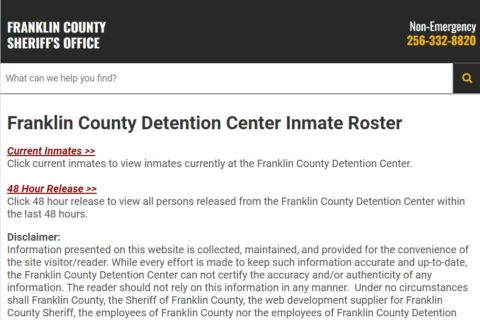There may be a moment where inmates need to be transferred to another prison. However, their transfer is not without a reason. When they are transferred, there are some rules and regulations that must be obeyed as well. When I tried to find information about rules and regulations on movement and transfer of inmates on some online sources, actually I could not find the article about the rules and regulations. Instead, I found information about the things that you may need to know about movement and transfer of inmates.
The Reasons Why Inmates Are Transferred
According to the Prisoners Families site, the reasons why inmates are transferred to another prison can be as listed below.
-
- The inmates’ main visitors have a medical problem so that it is impossible for the visitors to visit them if the inmates do not move.
- The inmates serve the final weeks of their sentence and they are transferred to a prison near their home.
- The inmates’ security category has changed.
- The sentence plan of the inmates requires them to complete a course which is not available at the prison that they are in.
- The behaviour of the inmates is in a disruptive way.
- Transferring is done for inmates’ safety if they are being bullied.
- The category A inmates need to be transferred from time to time for security reasons.

Several Things That You Need To Know About Movement and Transfer Inmates
According to the Prisoners Families site, here are the things that you need to know about transferring inmates.
-
- If an inmate wants to be transferred to a different prison, he or she does not have a legal right for doing it. In the Prison Act 1952, it is said that they can be held in any prison. However, usually it will be up to the governor whether they are transferred, except for Category A prisoners or people who are serving a life sentence, where case Prison Headquarters makes the decision. Even though there is no legal right, the Prison Service has a location policy which states that contact between an inmate and his or her family should be encouraged and that harmful effects of being removed from normal life are minimised. An obligation is owned by the prison to take reasonable actions for making the inmate safe where it may include a transfer if the inmate is bullied.
- Inmates are permitted to request a transfer through the request/ complaints system, or on a special form which is provided by the prison. Normally, transfers will only be considered after the inmate has served a few months at the prison he or she wishes to leave.
- If inmates request a transfer, they need to receive a response to their request within seven days if they use the requests/ complaints system.
- The initial request to move to another prison must come from the inmate. Does it mean that the family cannot help the inmate about transferring? No, families are permitted to write to the governor to explain about why it is difficult for them to maintain contact with the inmate, but only once an application for transfer has been made by the prisoner. To support the application, supporting letters from GP, social worker or other professional can also be sent.
- A prison transfer will not automatically be granted. The reasons may vary. One of the reasons may be because there is no place available in the prison or area the inmate wants to go to in the suitable category. However, if the inmate’s main visitor is in poor health condition, the prison may be able to give the inmate priority if the inmate asks for transfers.
- If the request of transfer is refused, the inmate is able to make an appeal through the requests/ complaints system and he or she has a right to a reply from Prison Service Headquarters within six weeks. Let’s say that the inmate is still not satisfied with the reasons that are given. If so, the inmate is able to write in confidence to the Prisons Ombudsman, but the inmate needs to do it within one month of receiving the reply from Prison Service Headquarters.
- An inmate who is being transferred has a right to send one free special letter to someone who visits him/ her. At the governor’s discretion, the inmates may be permitted more than one letter and / or an extra telephone call.
- An inmate who is held a long way from home can apply for a temporary transfer to a local prison to save up visits for six months. Usually, it is for 28 days. By obeying the rules and visiting times of the local prison, the accumulated visits are able to be taken during that time. Same as a permanent transfer, the inmate also needs to make the request, and it will be at the governor’s discretion and depend on availability of places at the local prison.
If you access the website of Ara Poutama Aotearoa Department of Corrections that can be accessed at here, you are able to read the explanation about movement. On that site, it is explained that movements which are internal, directed, and specified where these procedures cover the things below.
-
- Managing the movements of inmates, unlock regimes and prisoner work-party handover.
- Inmates are at-risk of themselves.
- Segregation of inmates.
And these procedures are designed to ensure that:
-
- movements are coordinated, documented, supervised and managed to ensure inmate’s safety and compliance with custodial requirements and re-integrative services.
- Inmates at-risk to themselves are identified on reception and are managed to be able to minimise their risk of self-harm.
- Requests for segregation are completed correctly and the directions and recommendations.
On that site, there is also an explanation about external movements (transportation) of inmates. The aim of the section is to manage the inmates’ escorts safely, humanely, and securely moved, escorted or transferred while minimising risk to inmates, staff, and the general public and includes health escorts, inter prison transfers, NZPB hearing, separation matrix, wheel chair, aircraft, ferry, transport transfer policies. The procedures are created to ensure that:
-
- Temporary release, release to work and temporary removal are coordinated, documented, supervised, and managed where it is done to ensure inmate safety and compliance with custodial requirements and re-integrative services.
- Inmates at-risk to themselves are identified on reception and are managed to be able to minimise their risk of self-harm.
That’s all some explanation about transferring an inmate that I got from the Prisoners Families site and also Ara Poutama Aotearoa Department of Corrections site. The explanation above may not still be complete so that if you need more information about the rules and regulations of transferring an inmate, you are able to read the other sources.

A bookworm and researcher especially related to law and citizenship education. I spend time every day in front of the internet and the campus library.




